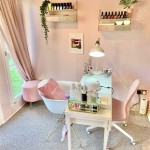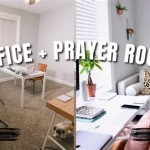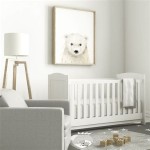How To Decorate One Room
Decorating a single room can feel less daunting than tackling an entire house. This focused approach allows for greater attention to detail and a cohesive design. Whether the goal is a complete overhaul or a simple refresh, a systematic approach ensures a successful outcome.
The first step is to define the room's purpose. A bedroom requires different considerations than a home office or a living room. Identifying the primary function will guide decisions regarding furniture, layout, and overall aesthetic.
Once the function is established, developing a budget is crucial. This prevents overspending and helps prioritize purchases. Consider the cost of furniture, paint, décor, and any necessary structural changes. Setting a realistic budget ensures the project remains manageable.
Inspiration can be drawn from various sources, including interior design magazines, online platforms like Pinterest and Instagram, and even visiting showrooms. Collecting images and ideas helps solidify a preferred style and creates a visual roadmap for the project.
Choosing a style is a critical step. Researching different design aesthetics, such as minimalist, bohemian, traditional, or contemporary, helps narrow down preferences. Consider existing architectural features and personal tastes to determine the most suitable style.
Creating a mood board is a valuable tool for visualizing the final look. This can be a physical board or a digital collection of images, fabrics, and color palettes. The mood board serves as a reference point throughout the decorating process.
Accurate measurements of the room are essential. Note the length and width of the room, ceiling height, and the placement of windows and doors. These measurements are crucial for selecting appropriately sized furniture and planning the layout.
Planning the layout involves strategically placing furniture to maximize functionality and flow. Consider traffic patterns and the room's focal point. Experimenting with different arrangements, either physically or using online room planning tools, helps optimize the space.
Selecting a color palette significantly impacts the room's atmosphere. Consider the room's size, natural light, and desired mood. A cohesive color scheme can be achieved by using a combination of dominant, secondary, and accent colors.
Choosing the right furniture is crucial for both functionality and aesthetics. Prioritize pieces that meet the room's needs and align with the chosen style. Consider the scale and proportion of furniture in relation to the room's size.
Lighting plays a vital role in creating ambiance. Incorporate a layered lighting approach, combining ambient, task, and accent lighting. Consider natural light sources and strategically place artificial lighting to enhance the room's functionality and mood.
Adding textiles, such as rugs, curtains, and throw pillows, introduces texture, color, and pattern. These elements can soften the room's appearance and create a cozy atmosphere. Choose textiles that complement the overall design scheme.
Incorporating decorative accessories like artwork, mirrors, and plants adds personality and visual interest. These finishing touches can enhance the room's character and create a sense of completion. Choose accessories that reflect personal style and complement the overall design.
Painting walls is a cost-effective way to transform a room. Choosing the right paint color can dramatically impact the space's mood and appearance. Consider the room's size and natural light when selecting paint colors.
Window treatments, such as curtains or blinds, provide privacy, control light, and add a decorative element. Consider the room's function and style when selecting window treatments. Choose fabrics and colors that complement the existing décor.
Flooring choices significantly impact the overall aesthetic. Consider the room's function and traffic when selecting flooring materials. Options range from hardwood and carpet to tile and laminate, each offering unique benefits.
Storage solutions are essential for maintaining a clutter-free and organized space. Incorporate storage solutions that are both functional and aesthetically pleasing. Consider utilizing vertical space and incorporating hidden storage options.
Regularly decluttering helps maintain a clean and organized space. Remove unnecessary items and organize belongings to maximize functionality and create a more visually appealing environment.

10 Small One Room Apartments Featuring A Scandinavian Décor

Amazing One Room Apartments That You Will Have To See Studio Interieur Decoratie Klein Appartement Wonen

Bedroom Interior Design Delhi Ncr

15 Ideas Of Minimalist And Simple One Room Apartment Decoratoo Deco Petit Appartement Idée Déco étudiant

How To Cope With One Room Living

10 Small One Room Apartments Featuring A Scandinavian Décor

How To Decorate A Studio Apartment 33 Ideas

10 Tips To Make A Small Bedroom Look Great
10 Tips For Decorating Small Ed Spaces A Beautiful Mess

Interior Design Ideas For Apartments







